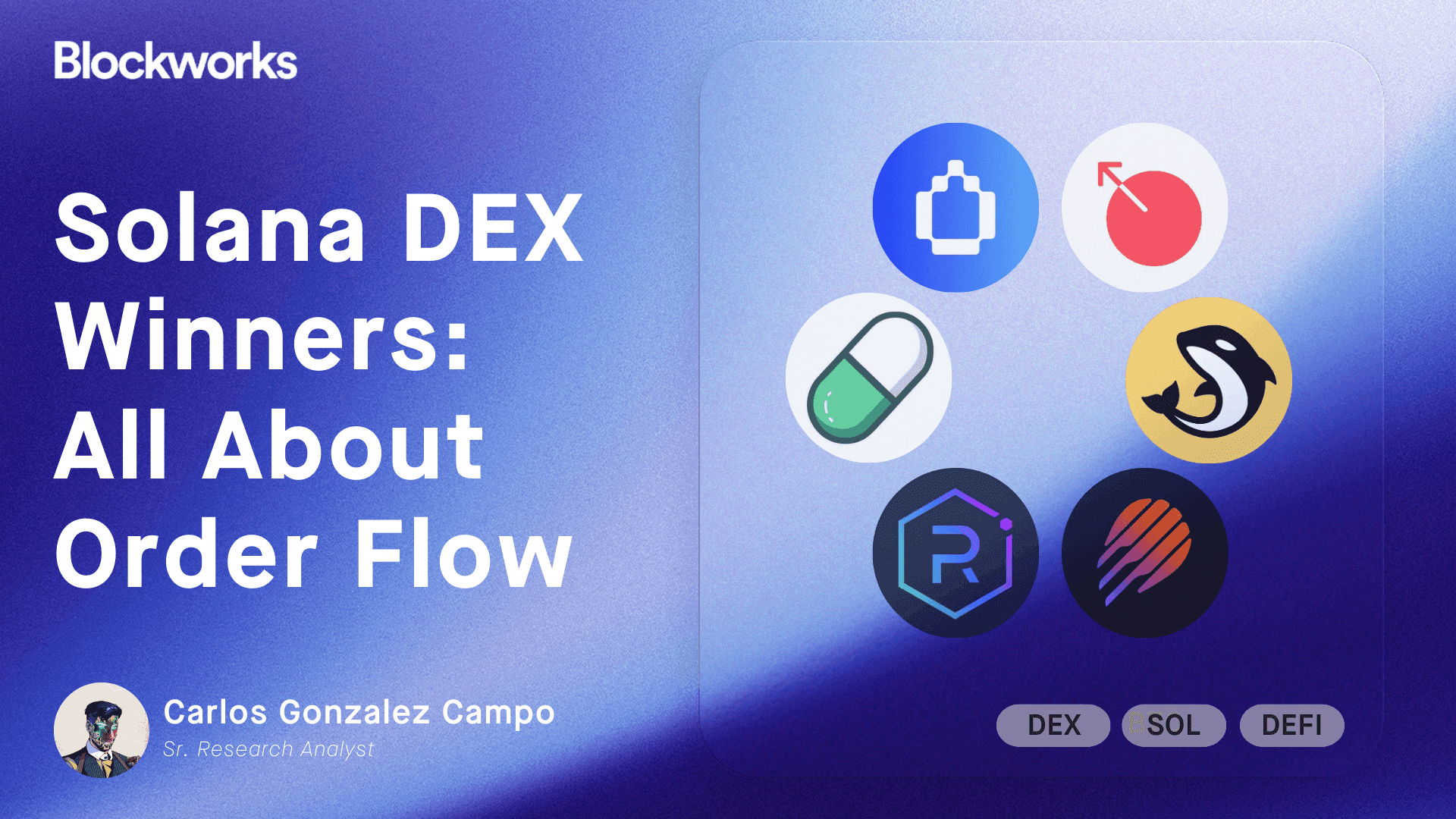Deutsche Bank puts ZKsync in the zeitgeist
The banking giant’s new permissioned layer-2 points to Ethereum’s growing role in TradFi

franz12/Shutterstock modified by Blockworks
Bull markets are the time of exciting mainnet launches, airdrops and announcements.
After the world’s shortest testnet, Kraken brought forward yesterday the mainnet launch of its Ink L2 rollup — months ahead of schedule. Then, Sophon, a consumer-focused validium L2 on the Avail data availability layer, also launched its mainnet.
But the announcement that’s getting ETH bulls excited today? Banking giant Deutsche Bank is planning an L2 deployment on ZKsync’s Elastic Chain stack, Bloomberg reported.
“Institutions looking to build onchain are coming to ZKsync for the ability to build in Web3 without compromise. ZKsync offers institutions with a customizable architecture to build tailored solutions that enable privacy, scalability and interoperability with other private and public blockchains,” Alex Gluchowski, co-inventor of ZKsync, told Blockworks.
Codenamed Project DAMA 2, Deutsche Bank’s initiative was first announced in early November as part of the Singapore central bank’s Project Guardian. Project Guardian is a global consortium of 27 financial institutions and eight key policymaker groups, focused on nudging financial institutions towards experimentation with asset tokenization and blockchain ledgers.
Deutsche’s L2 is a TradFi development, so all the trappings of a TradFi L2 is to be expected.
That is to say, it’s a permissioned L2 network that needs to prioritize regulatory compliance over the kinds of financial degeneracy replete elsewhere on public blockchains.
Regulators are increasingly coming around to recognizing the merits of blockchain technology, but even the most forward-thinking policymakers aren’t giving up their power in a pinch.
Put simply, financial regulators are saying: Go forth and innovate with blockchains, but not to the point where it undermines our political bottom lines, please.
As AdrianoFeria.eth put it: “The only pragmatic choices for institutions that require stringent oversight and interoperability are to either run their own private, permissioned layer-1 chains, or to harness Ethereum’s L2 ecosystems.”
So Deutsche, like other centralized institutions that have launched L2s, has turned to the premier destination for that customizable solution: Ethereum.
Ethereum’s pivot from sharding to a rollup-centric roadmap in 2020 was largely pitched as a technological bet on horizontal scaling rather than the vertical scaling route that Solana has taken. I.e., the global state can’t fit on one blockchain, we need to split it up.
That modular freedom to launch a chain however you want is also what motivates many TradFi institutions to choose Ethereum.
This strategy is, of course, not exclusive to Ethereum. Avalanche too, has pursued this aggressively with its subnet model.
Avalanche’s traction, however, has been subpar relative to Ethereum rollup adoption, for the reason that it has been one step behind Ethereum in technology.
“Firstly, Ethereum rollups came out before Avalanche’s subnets. And when subnets were ready, it carried a far higher upfront cost compared to launching an OP Stack rollup. All the while, costs of rollups were trending down with EIP-4844 and new data availability solutions like Celestia,” Blockworks Research analyst Nikhil Chaturvedi explained.
But that too is changing for Avalanche.
Avalanche’s Etna upgrade this week is drastically cutting the costs of launching an Avalanche subnet (now rebranded to Avalanche L1s). Previously, P-Chain validators had to stake 2000 AVAX, whereas costs today would be more than 10x smaller.
“The costs are now reduced to be cheaper or comparable to the cost of a rollup on Celestia,” Chaturvedi said.
Get the news in your inbox. Explore Blockworks newsletters:
- The Breakdown: Decoding crypto and the markets. Daily.
- 0xResearch: Alpha in your inbox. Think like an analyst.






